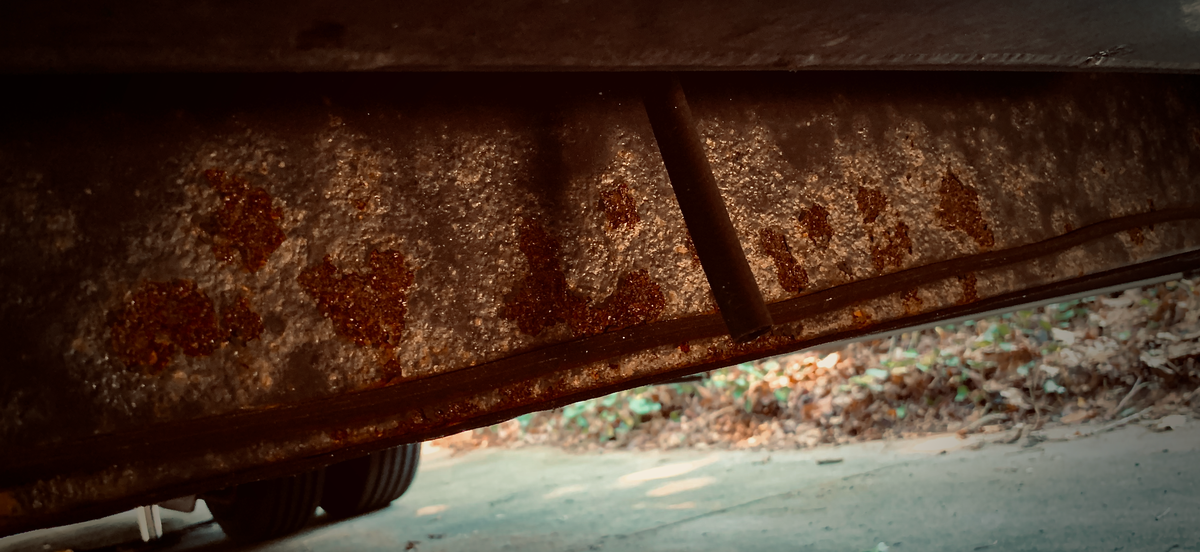How could this happen to me?
Over time pretty much all metal will rust, but there’s no arguing that the amount of rust under my beloved Forza was beyond it’s years! Rust happens when iron reacts with oxygen in the presense of water. Most metals used in the construction of vehicles are treated in various ways to drastically reduce the rate at which this reaction occurs, so what happened here?
The truth is I’m not entirely certain, but I have a suspicion that I drove through some freshly brined roads in Northern Tennesee last Autumn following an early snow. Chloride is a powerful catalyst in the formation of rust and road salt is a ready supply of that catalyst. Crucially I failed to clean the salty mess off my undercarriage when we got home for some reason. I know that I should have cleaned it, it just didn’t occur to me at the time to actually do so. Lesson learned.
Once I discovered the problem, here’s how I fixed it.
Materials Needed
The stuff we need is actually pretty common apart from the rust converter itself. Here’s your shopping (or digging our of your garage/basement) list:
- Corroseal Rust Converter - This is the star of our show. It’s a water-based primer chock full of delicious Tannic Acid and organic polymers which transform the rust into stable, durable Magnetite that will stop the damage from progressing and protect the surface from future incursions of salty metal-munchers.
- Wire Brushes - It’s a brush… with wire bristles. Together you will scour the scales off of that rusty surface.
- Paint Brush - Preferably a used cruddy one that you are okay with throwing away after this project.
- Personal Protectivce Gear
- N95 “Dust Mask” to prevent inhalation of rust dust
- Safety Goggles
- Gloves:
- Heavy Leather work gloves for the de-scaling work
- Nitrile gloves for use when applying the Corroseal (as it will stick like crazy to your skin if you let it dry on)
Let’s bust some rust
This process is actually quite simple and involves the following steps:
- Prepare the surface to be treated by removing as much of the surface rust as possible. You also need to ensure that there are no oil or grease contaminantts on the surface.
- Apply a thick coating of Corroseal to the surface using a paintbrush, roller, or spray nozzle
- Observe the surface as Corroseal dries. You should expect to see the treated area transform to a fairly uniform layer of shiney black magnetite
- A second coat never hurt anyone (or even a third)
- Surface can be painted after 24 hours if desired
What if I’m more of a visual learner?
Check out this video from our fancy pants YouTube Channel
[Imagine a sweet video here]
